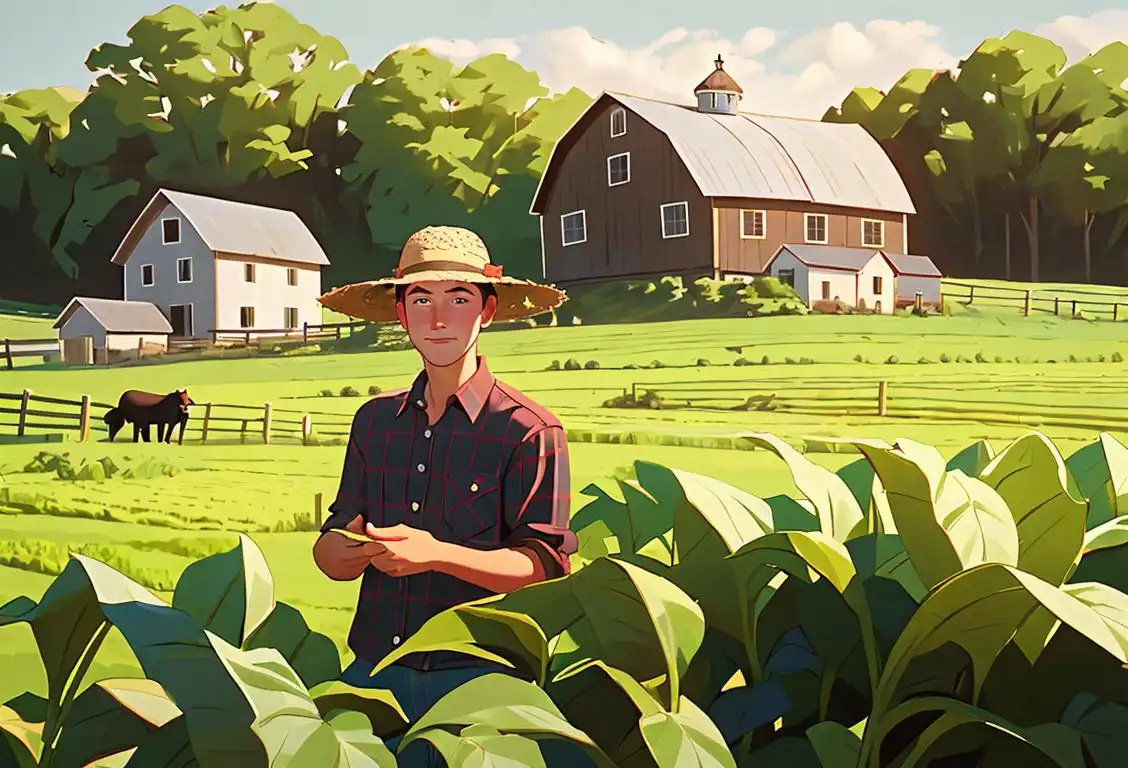National Agriculture Day

Are you ready for some agricultural action? Set your tractors to maximum fun, because we're delving into the slightly undulating, but eternally interesting, world of National Agriculture Day! We're not just talking about tomatoes, folks. With over 11292 online shout-outs, there's clearly a lot more to this than ranch dressing and good old-fashioned pitch forks.
When is Agriculture Day?
It's national agriculture day on the 21st March.
History of National Agriculture Day:
A day dedicated to appreciate the caress of grain, the hum of bees and the bountiful landscapes, National Agriculture Day has been quietly making its rounds on our calendars. Tracing back its roots, this day was first celebrated on 21 Mar 2017. On this day, the digital world was virtually brimming with mention of the nation's favorite pastime - farming! With posts ranging from intriguing cow facts to in-depth look at the crop rotation system, National Agriculture Day rapidly became an unexpected online sensation.
The Reason for the Celebration:
The main purpose of National Agriculture Day is to acknowledge our agriculture industry's indispensable contributions. It's a day to put down our avocados, step back from our wholegrain sandwiches, and express gratitude towards the farmers, who without them, our breakfast buffet would be depressingly barren indeed.
How We Celebrate:
How can you engage in this day of pastoral celebrations? Dust off your straw hats, take a pleasant orientation walk in your local farm, or just whip up a salad in honor of those hard-working roots. Just remember, the goal is to respect and understand our essential relationship with agriculture and how it shapes our world.
History behind the term 'Agriculture'
10,000 BCE
The Birth of Agriculture
Around 10,000 BCE, humans transitioned from a hunter-gatherer lifestyle to settled farming communities. This marked the birth of agriculture, a practice that involves cultivating plants and rearing animals for food, fiber, medicinal plants, and other products.
8,000 BCE
The Neolithic Revolution
Approximately 8,000 BCE, the Neolithic Revolution occurred in several regions independently, including the Fertile Crescent, China, Mexico, and Andean South America. This period witnessed the widespread adoption of agriculture as societies domesticated plants like wheat, barley, rice, maize, potatoes, and animals such as cattle, sheep, and pigs.
6,000 BCE
Irrigation Systems
By 6,000 BCE, societies began developing advanced irrigation systems to control water resources and maximize crop yields. Ancient civilizations like the Sumerians in Mesopotamia constructed canals, dams, and reservoirs, introducing the concept of organized agriculture and supporting the growth of large-scale settlements.
3,000 BCE
Early Agricultural Tools
Around 3,000 BCE, agricultural tools became more sophisticated. Humans started using plows pulled by animals, which increased efficiency and allowed for larger-scale farming. This advancement led to increased food production, population growth, and the emergence of complex societies.
500 BCE
The Spread of Agricultural Knowledge
By 500 BCE, agricultural knowledge was spreading globally as ancient civilizations like the Greeks, Romans, Indians, and Chinese began documenting agricultural techniques, crop rotation strategies, and the importance of soil fertility. These early writings laid the foundation for future agricultural advancements.
18th Century CE
The Agricultural Revolution
The 18th century marked the beginning of the Agricultural Revolution in Europe, characterized by technological innovations and improved farming techniques. Prominent figures like Jethro Tull and Charles Townshend introduced seed drills, crop rotation, and selective breeding, significantly boosting agricultural productivity.
20th Century CE
Modern Agricultural Innovations
In the 20th century, breakthroughs in agricultural research and technology revolutionized farming practices. The Green Revolution, starting in the 1950s, focused on the development of high-yielding crop varieties, the use of chemical fertilizers, and irrigation improvements. These advancements helped address food shortages and increased global agricultural productivity.
21st Century CE
Sustainable and Precision Farming
In the 21st century, there has been a growing emphasis on sustainable and precision farming practices. Sustainable agriculture seeks to minimize environmental impact and conserve natural resources by promoting organic farming, crop diversification, and integrated pest management. Precision farming utilizes technologies like GPS, drones, and sensors to optimize resource allocation and increase efficiency.
Did you know?
Did you know that farming is one of the oldest occupations in the world? So next time you pass by a farm, recall that you're looking at a profession pioneered by our ancestors eons ago!Tagged
awareness food fun loved ones rememberanceFirst identified
13th March 2015Most mentioned on
21st March 2017Total mentions
11292Other days
Happiness Day
Bbq Day
First Responders Day
Meatball Day
Trivia Day
Cheese Lovers Day
Biscuit Day
Pumpkin Day
Agriculture Day
Knife Day








